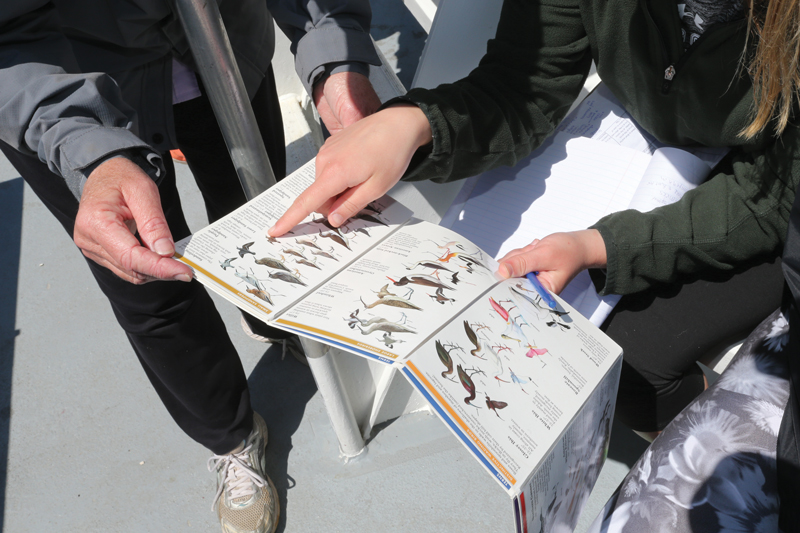
by Kaitlin Gannon and Brooke Knapick
In spring 2015, the Education Department announced plans to introduce a new water quality module to the Science Education at Sea (SEAS) and Environmental Education Field Trip programs. It was our desire to have students test and analyze the physical and chemical properties of both bay and ocean water while incorporating scientific practices and instrumentation that are consistent with the methodology and technology scientists and engineers routinely employ in the laboratory and the field. We envisioned students using underwater remotely operated vehicles (ROVs) and scientific hand-held data collection devices to measure the unseen properties of water including temperature, pH, salinity, turbidity, and dissolved oxygen. By measuring and analyzing these parameters, students could draw connections between the quality of the water, the health and diversity of the organisms living in the water, and ultimately, the health of the ecosystem.
Well, we have great news! With generosity from the Davenport Family Foundation and PSEG, the Education Department has been able to fulfill these goals through the creation of the Changing Tides with STEM module. Over the past few months, project leads purchased eight Vernier LabQuest2 digital data collection devices along with protective casings, portable battery chargers, two charging stations, and eight testing probes for each of the following water quality parameters: water temperature, dissolved oxygen, salinity, pH, and turbidity. Also purchased was a sophisticated underwater ROV which allows students to obtain water samples at different depths throughout the water column. The new OpenROV v2.8 features a refined control system and enhanced software, is durable and long lasting, and offers an enriching and well-rounded educational experience for the students.
Following training and practice with the new water quality testing equipment, Education staff piloted equipment usage onboard a few select spring SEAS programs. This pilot usage allowed Education staff to observe how students react and handle the new devices, ultimately assisting staff in determining proper teaching methods and techniques for using the equipment. Initial student reactions were very positive. The devices feel familiar to them, much like many of the portable electronic devices they would use on a daily basis. Results of the pilot programs guided staff on how to restructure programs to incorporate newly acquired water quality equipment into existing program formats to create the best possible learning experience for students.
Development of new learning materials and resources to accompany the new teaching module are in final stages of review and edits. These materials include comprehensive water quality data collection and background information sheets, ROV background information resources, water resources based pre and post classroom activities and a website data sharing portal for shared information. The introduction of the Changing Tides with STEM module is strategically timed to coincide with the integration of the Next Generation Science Standards for grades 6-12 and we expect to have all equipment, educational materials, and resources ready to launch for the start of the 2016-2017 academic school year this September. We are very excited about the current and continued development of our Changing Tides with STEM module and look forward to seeing the program in action this autumn!

